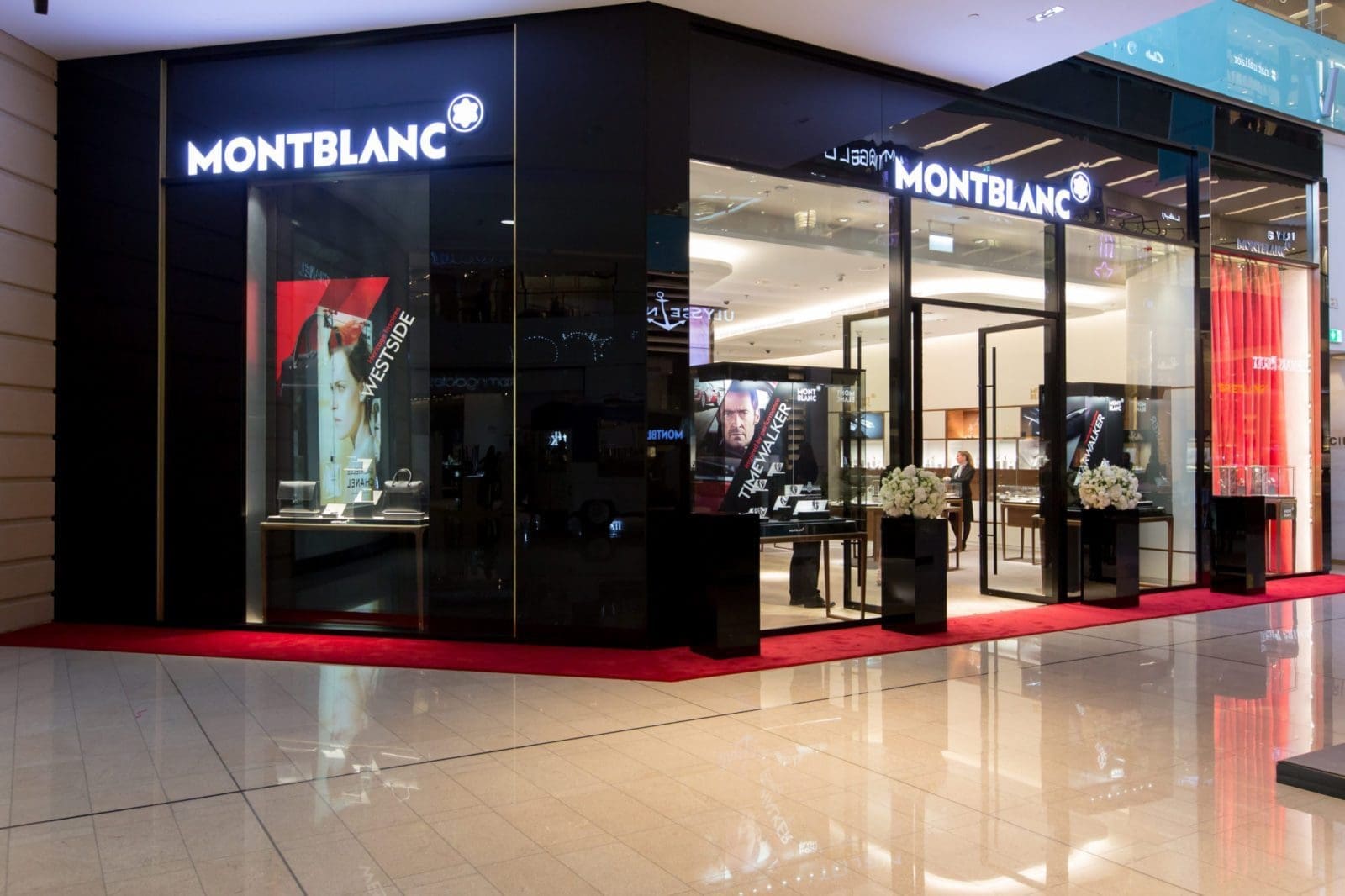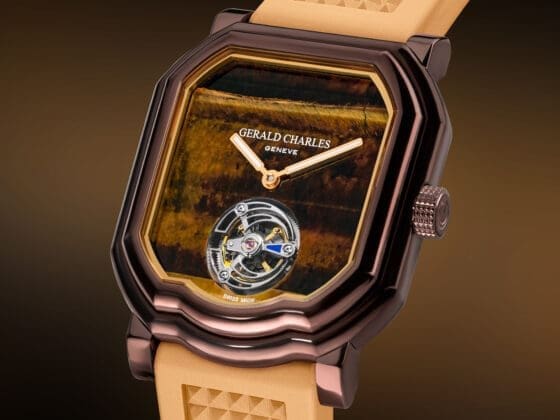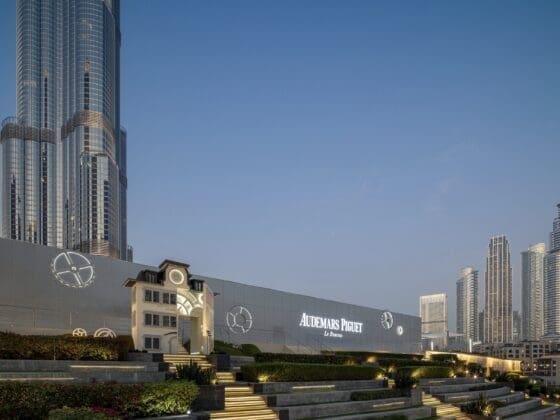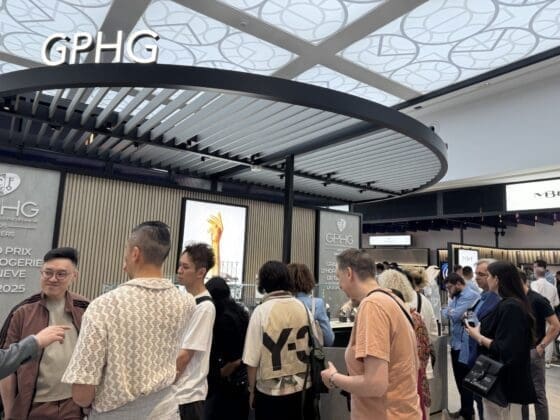Montblanc, the international leader in men’s luxury accessories, has reopened its flagship boutique in Dubai Mall, showcasing the new Neo-concept boutique design currently being rolled out globally. Reflecting the essence of Montblanc as the Maison of Fine Lifetime Companions, the new boutique communicates the true expression of luxury in a relaxed and inviting atmosphere. The immersive space also allows customers to explore the Montblanc story on their own terms and discover the diversity of Montblanc’s product offerings in areas dedicated to each category.
“The curved gesture that gives shape to the retail space evokes calligraphy and the culture of writing associated with the Montblanc fountain pen”
Designed by Noé Duchaufour-Lawrance, the new boutique concept introduces a pure and uncluttered aesthetic, mixing black, white and wood, and features three main design themes linked to the roots of the Maison. The curved gesture that gives shape to the retail space evokes calligraphy and the culture of writing associated with the Montblanc fountain pen. The emblem, inspired by the snowcap of the Mont Blanc mountain and symbol of the highest standards of perfection, is paired with the ink shades to represent the life and soul of Montblanc, and the desire to always evolve through innovation. Inside the boutique, alongside the black lacquered wall panels, recalling the distinctive Montblanc precious resin, an animated artistic ink flows on large screens.
On the day of the official store re-opening, Signe had the opportunity to sit with Zaim Kamal, creative director for Mont Blanc to discuss the world of design at Mont Blanc under his stewardship.
What were your early design influences and what does it mean to be a designer?
Design was always a big part of my life because my mother was a fashion designer. I was always surrounded by design, interiors and accessories. I never thought I would move into design because I wanted to go into music or arts like my other siblings. I would say my earliest design influences are drawing. I had an affinity for this and this is how it all started. Whenever there was a piece of paper I used to doodle on it. So this idea of constantly doodling or drawing was something that was with me from an early age. But this does not make me a designer.
I realized that for me the process of putting pen on paper and creating something that could be translated into a 3d version, and then replicated was a fascinating and interesting way of approaching work. As a designer, I need to structure and understand what it is I am working on. Today when people see me drawing they say this is talent. But what they don’t know is how much hard work goes into the drawing. Even though I draw every day, if I don’t draw for a week it takes me a few hours to get back into it. And like with every craft, it’s about taking the time, effort and passion for actually learning. You never stop learning, and design is not something you finish learning. It’s something that you develop on a daily basis. Every day you’re learning, whether it’s the way a watch movement works, of new methods of folding leather or understanding how you can hold a writing instrument different, or press the nib to give the ink a different flow. So it’s these little aspects that you learn on a daily basis. For me it’s important that you are never complacent about what you do. Because the moment you are complacent you stop growing and acquiring knowledge, and that is the end of design.
How would you define your design philosophy?
“It’s about creating pieces that don’t dictate to you, but you as a wearer define how you want it. It becomes a companion of yours rather than it becoming overbearing. It has to be seamless, tactile and beautiful and bring pride in the ownership”
I think the beauty of design is that you have a challenge; you need to find innovative ways to approach the challenge and come up with a solution. The solution has to be replicable, and it has to have a certain function, and you get to see that work in many guises and have people wearing it and using it. This is where my design philosophy comes in. It starts with understanding how people interact with my product today. How do they use it, how do they play with it, how do they treat it, how do they cherish it. Design is about creating a piece that actually lives with the person and something that the person actually uses. It’s about creating pieces that don’t dictate to you, but you as a wearer define how you want it. It becomes a companion of yours rather than it becoming overbearing. It has to be seamless, tactile and beautiful and bring pride in the ownership.
How would you describe the design process at Mont Blanc?
I start on a new direction once a year around September. I come up with an idea for a general design concept. I always start from the clients’ eyes, from the perspective of who I am designing for. What are his or her needs and this gives me a certain direction. Once I have an idea of the topic I present three concepts to the design team. Based on these three concepts, each design team from each category such as writing, leather, watches, and accessories, works on a collection that fits within their lines. They all sit within the manufacture because it’s very important that designers are not disconnected from the manufacture. They work very closely with the artisans, and they literally sit in the same room, so this allows us to interact on an almost ongoing basis with the artisan.
Before Mont Blanc, I would come up with drawings and submit it, and a few months later someone would show up with a prototype. I would look at my prototype and my drawing and wonder where the connection is. Now I can go straight to the movement maker and say we have been asked to design a chronograph with all these functions and we are thinking of designing the case. I find out the movement size and discuss how we can make the case slimmer and give them a challenge. They get working on it, and they come back with what they can do. It’s an iterative way of working, and there is a constant back and forth and this way you ensure that the original design that you had in mind, you are able to find a way to follow it through.
I think the connection between the craftsman and design is very important. This is just the way I work because it’s crucial that we work together at every level. It’s not just design that makes a product and it’s not only the movement maker, it’s how it all comes together. As an analogy, it’s the whole soup that cooks together and it’s about the right amount and balance of ingredients that you put in so that it tastes good. I think the process of cooking is for me one of the most fascinating ways of creating something because of its subtleties. Sometimes there is that knowledge of the recipe, but then there is also this gut feeling, and you add a pinch of this, and you add a bit more of that. And this is a measure that you just know intuitively. There is a delicate balance, and I think it’s a fascinating way of working and this is how we’ve set it up internally at Mont Blanc.
We have always worked very closely with the marketing team, and they do a lot of market research. So they tell us what direction to look at such as the trend is moving towards professional watches or maybe towards softer leather and then we try to put that into the overall framework. Then the challenge is to find out how to tie this leather line with the writing instruments and how do I tie the writing instruments with the accessories, and where does the watch come in. So sometimes like I said, they’re running quite close to each other and sometimes the themes can be a little apart but you will find small details that go through the line.
At Mont Blanc, how much are you driven by trends in the market, including fashion trends?
At Mont Blanc, we are aware of what is going on with regards to the seasons, but we are not a fashion Maison. So we really have to think about that first and when we do a new line whether it be writing instruments, or watches we have to always think about it in a three or five years perspective. That makes it more challenging because you need to design a product that is relevant three years from now. Also, what do I need to change in three years’ time when we rethink the design. So we have to think about all these things in advance. I work two years in advance in most categories, so now for instance for watches and writing instruments we are working on the 2019 and 2020 collection already. For us, it’s all about the longevity of the piece.
We only incorporate trends or any idea if it has a long-term view. In fashion it’s easy because if you know that the collection is not a 100-percent, six months later you can start new. These days some fashion cycles are even as short as a few weeks. At Mont Blanc, I have to live with design decisions for a much longer period. Most design decisions are a three-year decision at least; sometimes it could be even longer. Some of the products that you see in the boutique today were designed at least two years ago. We had to think of how the customers would perceive it in the future. It’s much more challenging, and at the same time, it’s much more fun because you have to be precise.
How would you describe the Neo-concept that has been rolled out across the Mont Blanc boutiques?
“The idea was to design an area where the client does not feel intimidated but at the same time experiences the Maison in a very subtle way”
Today brick and mortar stores are where clients can experience what a brand is about. We wanted to create an environment which allows each product category its own stage to speak, yet at the same time allows the client to go on a journey through the Maison and to experience it in his own way. This is why there is a flow, and at the same time, we have these niches and corners. Places where you can sit, touch and feel the products. You have the writer’s area because writing instruments are things that need to be tried. And there’s the leather, it needs to be touched, watches need to be presented, and you need to feel them as well. The idea was to design an area where the client does not feel intimidated but at the same time experiences the Maison in a very subtle way.
The piano black is actually a sign of the Maison from the Meisterstuck days. It’s a precious resin black that serves as a gesture flowing through the boutique. The wood gives some warmth to the design and invites you to look. Sometimes you walk into a store, and there is a lot going on. We wanted it to flow and to be more of an instinctual journey rather than do this first, and then go here next and so on.












